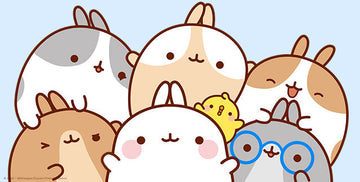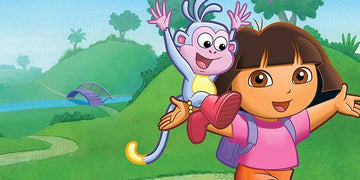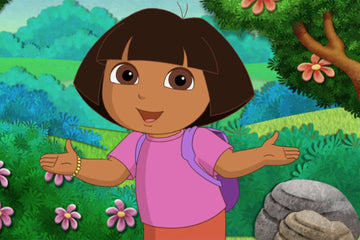The figure of Santa Claus is beloved around the world, but his origins are often less understood. He evolved from the historical Saint Nicholas, a 4th-century bishop known for his generosity and kindness.
Over the centuries, the story of Saint Nicholas combined with various cultural traditions to shape the modern image of Santa as the jolly man in red who delivers gifts on Christmas Eve.
In many cultures, he is known by different names, such as Kris Kringle or Father Christmas. The journey of Santa Claus reveals how influences from folklore, religion, and even marketing created the character recognized today. Readers may find it fascinating to trace how the historic roots of Santa influenced contemporary celebrations and customs surrounding Christmas.
Exploring Santa's past offers insights into how this iconic character became a symbol of joy and giving, transcending cultures and generations. Understanding his story adds depth to the holiday spirit felt during the Christmas season.
Origins of Santa Claus
The origins of Santa Claus blend various historical figures and cultural traditions. Understanding these roots reveals how a legendary character evolved over centuries.

St. Nicholas and Sinterklaas
St. Nicholas was a 4th-century Greek bishop known for his generosity. Born in Patara, he became the Bishop of Myra and was celebrated for his kindness and miracles. His acts of giving, particularly to children and the poor, laid the groundwork for the modern Santa Claus.
The name "Santa Claus" derives from the Dutch "Sinterklaas," a shortened version of Sint Nikolaas. Dutch settlers brought this tradition to America in the 18th century. Celebrating Sinterklaas involved parades and gift-giving on December 5th, which eventually merged with Christmas celebrations in the New World.
Pre-Christian Influences
Before Christianity, many winter festivals celebrated the solstice, marking the return of longer days. Pagan traditions often included gift-giving and feasting.
These customs influenced the celebration of Christmas. Figures like Odin, who rode a flying horse, also inspired the image of Santa. His connection to winter festivals helped shape Santa's character as a bringer of joy and gifts, particularly in December.
European Legends and Traditions
Various European legends contributed to Santa's modern persona. In Germany, the figure of Christkind, a gift-bringer, was popular. In other regions, Father Christmas emerged as a symbol of charity and merriment during the holiday season.
In Italy, La Befana, a benevolent witch, delivers gifts to children on Epiphany. These traditions created a diverse tapestry of customs around gift-giving. Each legend shaped how Santa Claus is viewed today, reflecting different cultural values and history.
Santa Claus in Popular Culture
Santa Claus has become a significant figure in popular culture, evolving through literature, advertising, and various forms of media. His image has been shaped by different influences, making him a symbol of joy and generosity that resonates globally.
19th-Century Literature
The 19th century played a vital role in shaping the modern image of Santa Claus. In 1823, an anonymous poem titled “A Visit from St. Nicholas,” often known as “The Night Before Christmas,” portrayed Santa as a jolly figure delivering gifts on Christmas Eve. This poem introduced elements like his sleigh and reindeer, which became central to Santa's story.
Additionally, in 1843, Charles Dickens’ "A Christmas Carol" helped popularize the idea of Christmas as a time for giving and kindness, reinforcing Santa's role. These literary works laid the foundation for the cheerful and generous nature associated with Santa Claus today.
Coca-Cola's Influence
In the 1930s, Coca-Cola played a significant role in defining Santa's modern image. The company hired illustrator Haddon Sundblom to create advertisements featuring Santa enjoying a Coke. This portrayal showed him as a warm, friendly character, dressed in the now-iconic red and white suit.
These advertisements became widely popular and established Santa as a symbol of holiday cheer. The combination of the festive imagery and the message of sharing made Santa Claus an essential figure in American holiday culture during this time.
Media and Entertainment
Santa Claus has become a central figure in various media and entertainment formats. Movies like "Miracle on 34th Street" and "The Santa Clause" series have further popularized his image. They depict him as a lovable character, often facing challenges that highlight the spirit of Christmas.
Television specials, such as "Rudolph the Red-Nosed Reindeer," have also contributed to his popularity. These shows mix storytelling with themes of kindness and inclusion, appealing to both children and adults.
The portrayal of Santa Claus continues to evolve in contemporary culture, showcasing his enduring appeal as a festive symbol around the world.
Evolution of Santa's Image
The image of Santa Claus has transformed significantly over the years. This evolution includes traditional depictions influenced by historical figures and legends, followed by modern portrayals shaped by marketing and popular culture.
Traditional Depictions
The early image of Santa Claus was closely linked to Saint Nicholas, a 4th-century Christian bishop known for his generosity. He was often shown wearing a bishop's robe, with a mitre on his head and a crozier in hand. These depictions emphasized his role as a kind and giving figure.
In Europe, depictions like Sinterklaas in the Netherlands evolved from Saint Nicholas. This version featured a long beard and a red cloak. These images focused on his caring nature, especially during the holiday season.
By the 19th century, illustrations began to merge these traditions, showcasing Santa as a jolly, larger-than-life character. An example is Thomas Nast’s artwork in "Harper's Weekly," which solidified many traits of the modern Santa image.
Modern Portrayals
The modern portrayal of Santa Claus emerged in the late 19th and early 20th centuries. Coca-Cola played a major role, hiring illustrator Haddon Sundblom. His images depicted Santa as a chubby, cheerful man in a red suit, enjoying a Coke while delivering presents.
This jolly Santa became widely popular through advertisements and holiday promotions. These illustrations emphasized joy, warmth, and the spirit of giving.
While the traditional Santa was often associated with religious themes, modern portrayals focus more on the festive aspect of Christmas. Today, Santa is recognized worldwide, bringing a sense of magic and joy to the holiday season.
Santa Claus Around the World
Santa Claus is celebrated in many forms by different cultures. Each region adds its unique twist to the legend, influenced by local traditions and customs. These variations show how Santa embodies the spirit of giving and joy, no matter where he is found.
Cultural Variations
In the Netherlands, the figure of Sinterklaas is significant. He arrives by steamboat from Spain and is celebrated with parades and gift-giving on December 5th. Sinterklaas is often accompanied by helpers known as Zwarte Piet, who assist with delivering gifts.
In contrast, in Japan, Hoteiosho is a Buddhist figure that resembles Santa. He is said to bring gifts on New Year’s Eve. Families place out food to welcome him, showing a blend of Christmas and New Year traditions.
In Russia, Ded Moroz, or Grandfather Frost, delivers gifts on January 1st. He is often accompanied by his granddaughter, Snegurochka, who helps spread holiday cheer. Each of these figures highlights regional customs while sharing similar themes of generosity.
Local Traditions and Practices
In Brazil, Santa Claus is known as Papai Noel. Instead of coming from the North Pole, he is said to travel from a remote village. Children leave him letters and gifts of food, adapting Christmas practices to fit local culture.
In Italy, La Befana is a witch who delivers gifts on the night of January 5th. She is often depicted as a kind old woman riding a broom. Families celebrate by leaving out treats for her, blending the festive spirit with ancient folklore.
In the United States and Canada, Santa Claus is widely recognized as a jolly man in red, thanks to media and advertising. Children hang stockings and write letters to him. This tradition emphasizes hope and excitement during the holiday season, linking back to the original tales of St. Nicholas and his spirit of giving.
Contemporary Celebrations
Contemporary celebrations of Santa Claus have evolved to include both community events and private traditions. These festivities create a sense of joy and togetherness during the holiday season.
Community Events and Parades
Many towns host community events and parades featuring Santa Claus. These events usually take place in early December.
Festivities can include:
- Holiday markets: Vendors sell crafts and seasonal foods.
- Live music: Local bands perform festive songs.
- Santa's arrival: Often by fire truck or sleigh, to greet children and families.
Children enjoy meeting Santa, taking photos, and sharing their holiday wishes. These gatherings promote community spirit and allow families to bond over shared experiences. Spectators, young and old, come together to celebrate the season.
Private and Family Traditions
In homes across the world, families build their own private traditions around Santa Claus.
Common practices include:
- Decorating homes: Families adorn their houses with lights, stockings, and trees.
- Baking cookies for Santa: Children often leave milk and cookies out on Christmas Eve.
- Reading stories: Many families enjoy reading classic Christmas tales featuring Santa.
These personal customs help create lasting memories. Each family may add unique elements, such as special ornaments or unique gifts from Santa, to make their holiday experiences more meaningful. This mix of community engagement and family bonding enriches the holiday spirit.





